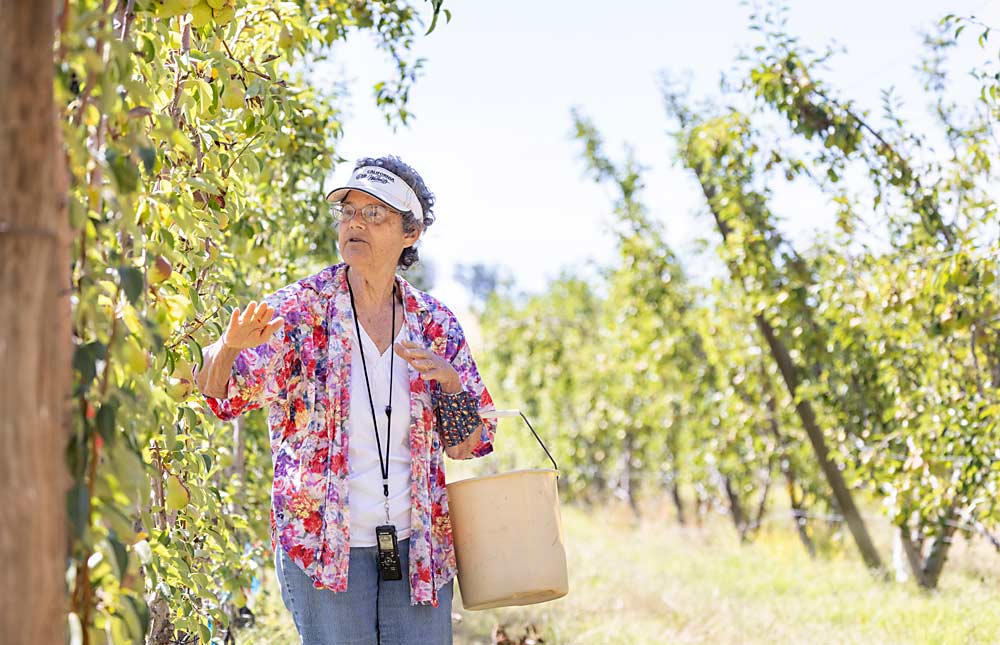
Editor’s note: This story has been edited to remove incorrect information included in the original version. Elkins did not split the bi-axis trial in two with different crotch heights, as reported in the February 1 print issue.
Though pear growers in the North Coast region of California may struggle to justify the expense of high-density, trellised systems, Rachel Elkins has nearly 30 years of research to help them navigate if they ever take the leap.
Elkins, a semiretired pomology farm advisor for the University of California Cooperative Extension, recently shared insights from nine of 10 years of her second NC-140 high-density Bartlett pear trial in Mendocino County. NC-140 is a group of tree fruit horticulturists who cooperate on rootstock trials at replicated sites across the U.S.
Growers in Mendocino County and neighboring Lake County, beleaguered by labor shortages, processor consolidation and a shifting climate, generally believe trellised orchards on size-controlling rootstocks are the way forward. Uncertainties in the market make them hesitant, but Elkins’ data should help them decide how to select their own best practices if the time is right, she said.
“The purpose of these 10-year trials is to learn if and how high-density systems employed in other fruit crops, primarily apples, could be employed to hasten precocity, and hence profitability, in pear, especially given increasing labor cost and scarcity and increasing management costs and regulations,” she said. The answer is yes, through a variety of techniques she spent the last nine years fine-tuning.
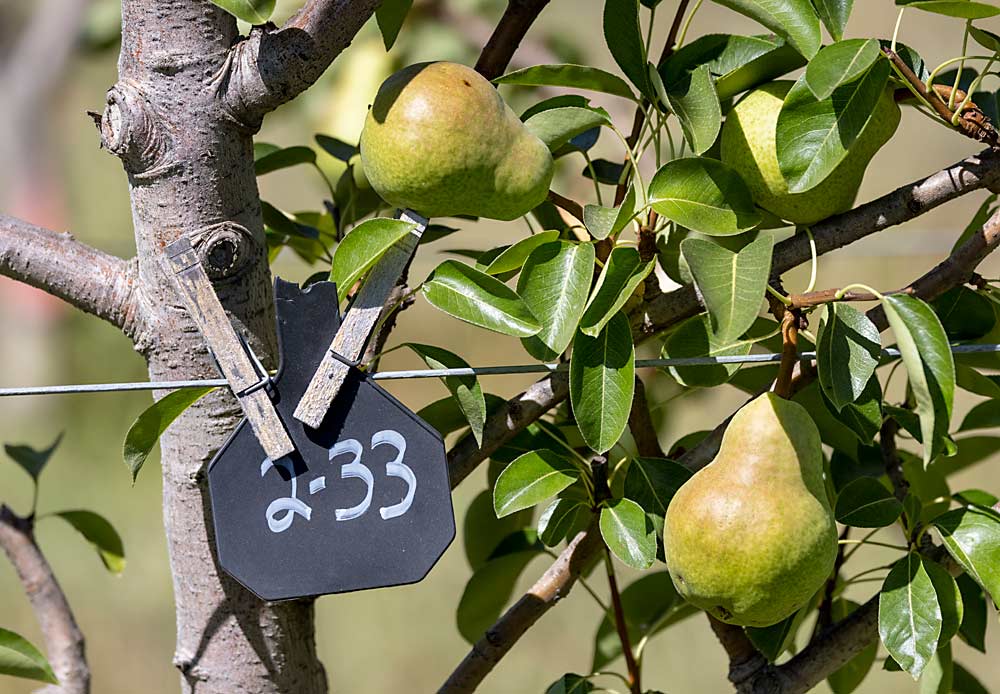
Her latest trial, planted in 2013, compares three treatments in four categories. Training systems are V-trellis; a two-leader system with nursery-budded leaders at the base, which she calls bi-axis; a two-leader system created by standard heading in the field; and tall spindle. Rootstocks are Old Home by Farmingdale 87, OHF 69 and Pyro 2-33. Tree spacings are 3 feet, 4.5 feet and 6 feet.
The trial was replicated, without the two-leader training and with other cultivars, by other researchers in Geneva, New York, and Hood River, Oregon. The Hood River site was removed in 2018 due to fire blight and winter injury.
Here is a look at some of Elkins’ key findings from this trial at the Mendocino County site:
—Training systems made the biggest and most consistent difference in tree growth and production, followed by rootstocks, then spacing.
—V-trellis trees filled their space, generally produced the largest fruit without sacrificing yield and had the highest yield efficiency. A V-trellis system also tamed into two dimensions easier than the bi-axis and tall spindle. “It’s a system I think you can easily teach people how to do,” she said.
—V-trellis and tall spindle trees were the easiest to train and produced the most fruit and highest yield, though tall spindle fruit produced smaller fruit than V-trellis. The bi-axis approach required the most retraining for a two-dimensional canopy.
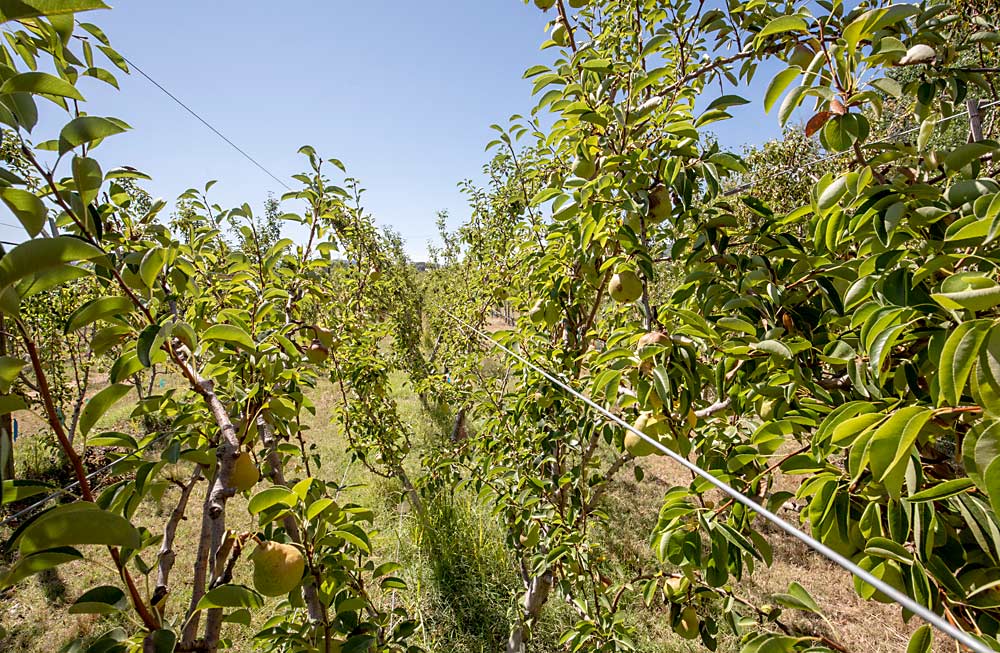
—When pruning, select buds closest to the primary wood and oriented parallel to the trellis to get the best crop load support and prevent shading, bruising and sunburn. It also helps to keep the system two-dimensional. Remove bottom buds and keep branches a foot apart to avoid bruising lower fruit.
—Pyro 2-33 produced the lowest yields in early years, due to vigor, but increased as trees matured. It also grew the largest fruit, a critical trait for the California market.
—OHF 87 showed the overall highest yield efficiency, but fruit size and yield have decreased due to lower vigor than the other two rootstocks. (Though not in this trial, Old Home by Farmingdale 97 produces larger fruit than OHF 87 in North Coast conditions. The most common commercial pear rootstock in the region is Betulaefolia, a vigorous, deep-rooted and relatively replant-tolerant rootstock for flood-prone soil.)
—Six-foot spacing produced the highest yields, 3-foot spacing the lowest.
Elkins is still evaluating results for 2021, a historically hot year that produced unusually small fruit throughout the region, but the trends and lessons held — as far as she can tell from her early analysis. “We learned a lot this year,” she said.
Elkins keeps horticultural maintenance simple for herself and growers who may want to try their own trellises. She prunes only in the spring and early summer to check vigor and strategically remove foliage. She carries only clothespins for training and hand shears, rarely loppers, and she often uses just her hands, ripping out shoots instead of cutting them. She makes only thinning cuts, never heading cuts.
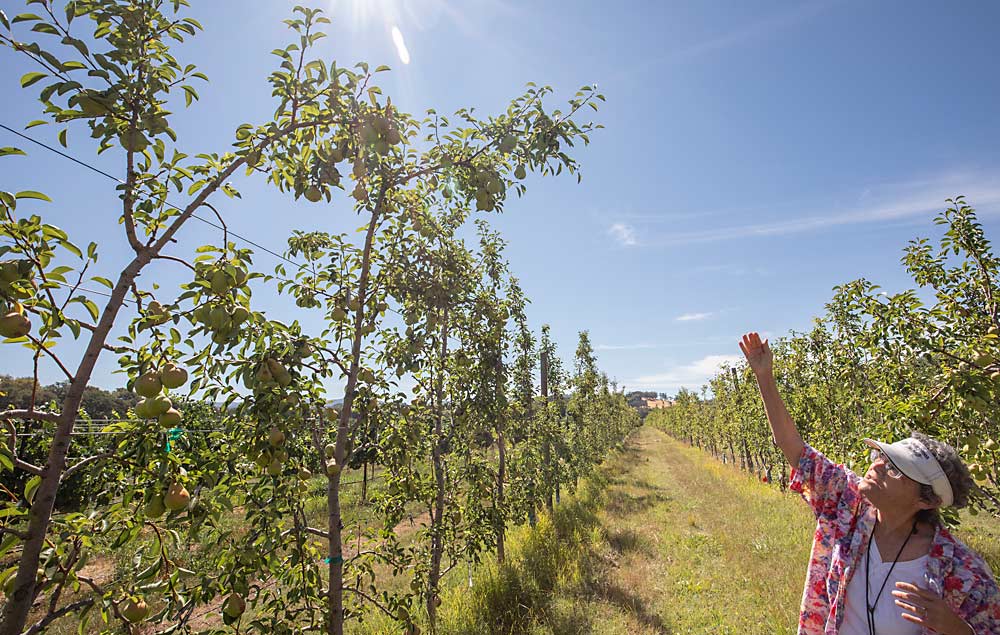
She has few support staff or students to help her. Growers lack labor, too, which makes in-season pruning an extra challenge. “We don’t have people for fine work such as notching,” she said.
Elkins is not trying to prescribe the single best combination of training system, rootstock and spacing. Growers will have to make those decisions based on the knowledge of their own farm.
But she believes the lessons will apply to pear growers in other areas.
“I don’t see why not,” she said.
—by Ross Courtney

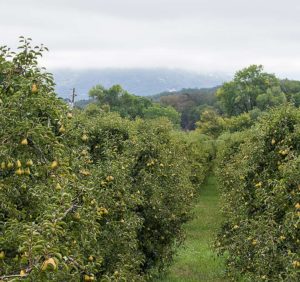





Leave A Comment